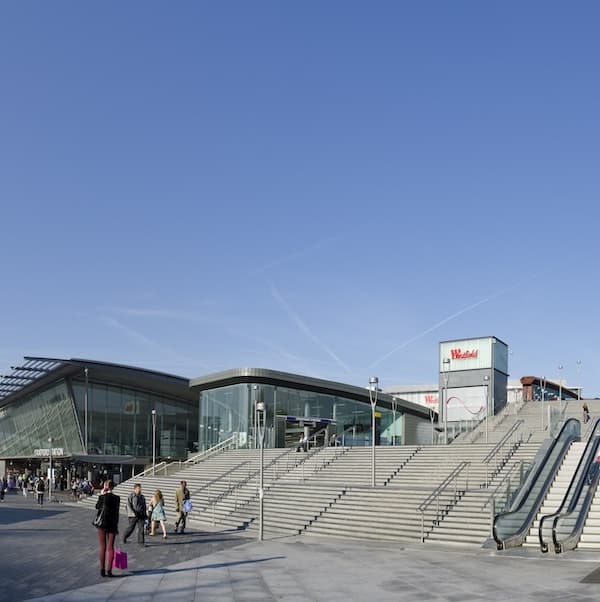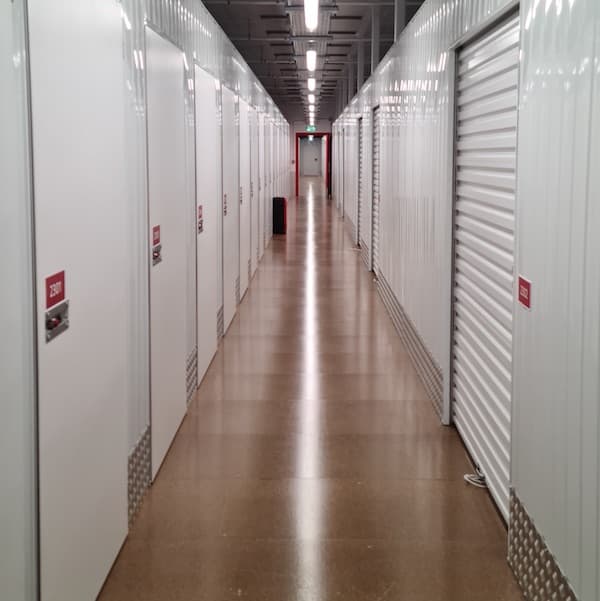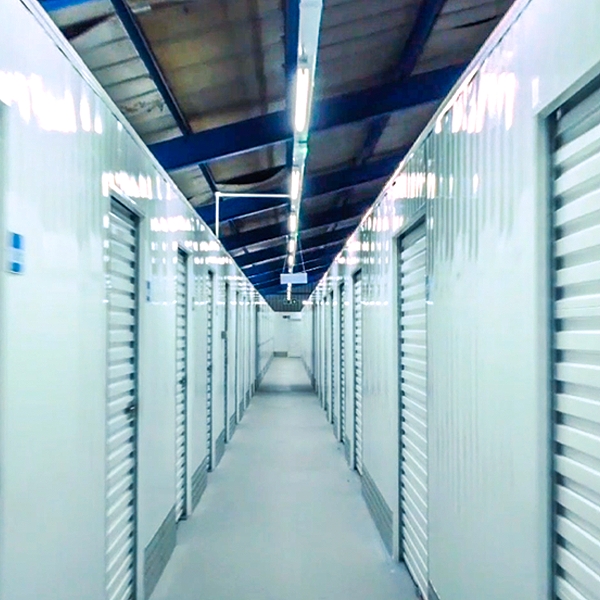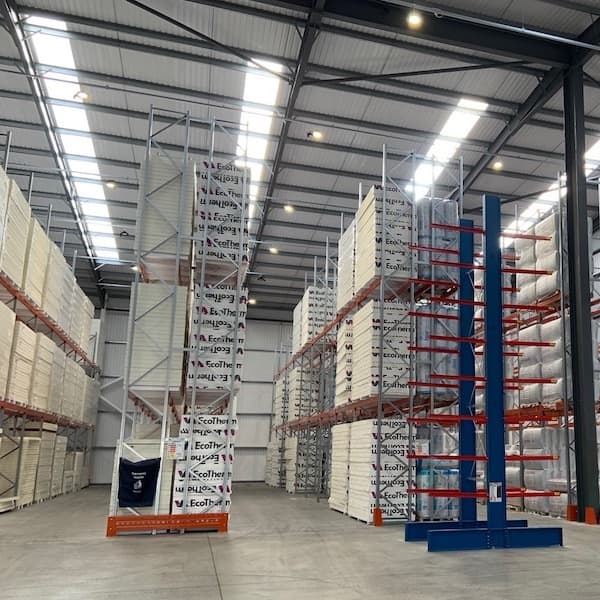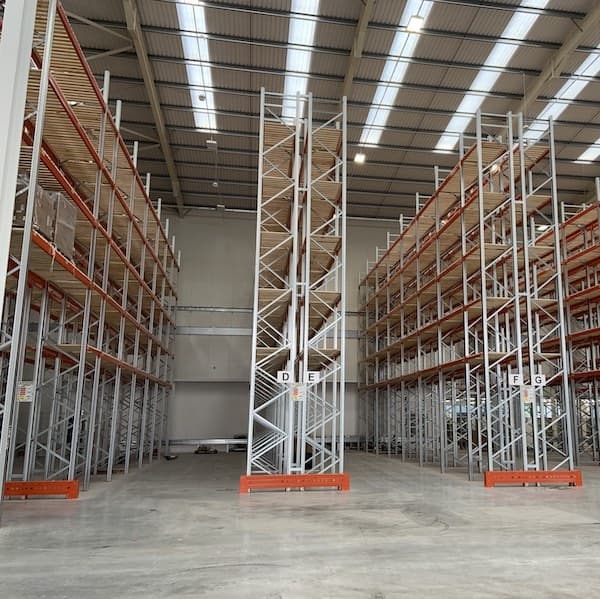- Mezzanine Floors
- Solutions
- Multi-Tier Mezzanines
- Mezzanine Pallet Safety Gates
- Mezzanine Staircases
- Mezzanine Handrails and Balustrades
- Mezzanine Decking
- Fire Protection for Mezzanine Floors
- Mezzanine Lift Shaft Design and Installation
- Resources
- Mezzanine Floor Calculator
- Mezzanine Floor Regulations and Building Control
- Self-Storage Mezzanine Floors
- Self-Storage Units
- Resources
- Self-Storage Site Selection Information
- Calculating The ROI of Self-Storage Conversions
- Planning for Automation in Self Storage
- Racking & Shelving
- Solutions
- Cantilever Racking
- Pallet Racking
- Coil Racking
- Longspan Shelving
- Tyre Racking
- Kimer Racking
- Live Storage Racking
- Drive In & Drive Through Racking
- Clip Shelving
- Mobile Shelving
- Custom Fabrications
- About Us
- USS Case Studies
- Self-Storage Fit-out For Raked Ceiling Building
- Mezzanine And Staircases For Entertainment Venue
- New Mezzanine And Staircases For Major Retailer
- Mezzanine Pallet Safety Gate
- Self-Storage Fit-Out Project For Brand New Facility
- Warehouse Racking, Wire Mesh & Shelving for New Warehouse
- Self-Storage Partition System & Components Installation
- Self-Storage Store Mezzanine And Staircases
- Multi-Tier Mezzanine For Logistics & Distribution Facility
- Warehouse Plant Platform
- Self-Storage Facility Space Expansion
- Mezzanine Floor For Distribution Warehouse
- Bespoke Feature Staircase & Mezzanine
- Single Level, Multi-Use Mezzanine
- Mezzanine For A New Building
- Mezzanine Floor For Plumbing Supplies Warehouse
- New Racking System and Mezzanine Floor
- Car Park Conversion To Self Storage Facility
- Pallet Racking and Cantilever Racking For Warehouse
- Two Mezzanine Floors For Self-Storage Facility In Birmingham
- Our Accreditations
- Contact Us
- USS Case Studies
The Latest Blogs From USS
Robots and the Warehouses of the Future
read
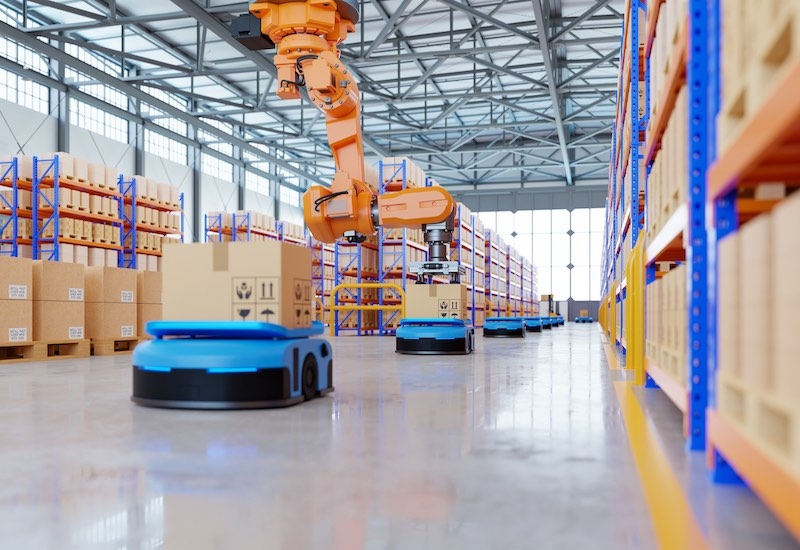
There are some innovations, like driverless cars, which always seem to be on the verge of being delivered but never quite actually arrive. There are stories about a prototype here and a major breakthrough there, of course, but the day when we open our front door and step into our automated vehicular pod (Elon Musk will probably come up with a catchier name) always seems to be deferred until some point in the future. On the other hand, robots have been with us for quite some time. They are becoming increasingly sophisticated, and nowhere is this leap forward in technology more noticeable than in the world of warehousing.
When we mention robots, we don’t mean the stunningly lifelike figures beloved by science fiction writers, but rather the drier, more technical definition of machines that perform tasks traditionally handled by human beings. To understand the use of robots in warehouses – moving from the state of play today to some predictions for the warehouse of tomorrow – it’s probably worth considering the impact that technological advances had on the shape, size and form of the average warehouse across the twentieth century. The humble forklift truck drives most of this change.
Nobody who has worked in a larger warehouse for any length of time could look at a forklift truck and get excited by the technical innovation on show. However, the forklift’s perception as a run of the mill tool of the trade wasn’t always the case. As historian James A. Tompkins has pointed out, the methods used to stack and shift goods in warehouses toward the end of the First World War were somewhat limited: “the most common materials handling method in warehouses involved the use of hand trucks. Stacking was performed by hand, and, in most buildings, stacking heights were designed in the 8 to 12 foot range”.
Not only was stacking and shifting goods labour intensive and physically demanding, the lifting and lowering of items also involved using a manually operated hoist. The fact that this was taking place at a time of rapidly accelerated technological and mechanical advancement (much of it fuelled, as is sadly often the case, by warfare) meant that the people in charge of running warehouses became convinced that there had to be a more efficient, machine-driven method of lifting, lowering and shifting items. Step forward the Clark Equipment Company, then based in Michigan, who in 1917, unveiled the Clark Trucktractor. Admittedly, this resembled a small tractor, rather than a modern forklift that had to load goods manually onto the platform, but by the 1920s, the Trucktractor had evolved significantly. By this time, it incorporated a chain system that could lift goods off the floor - and even though it could only raise a wooden crate a few inches, this simple innovation had a huge impact on the efficiency of warehouse operation, particularly when compared with the traditional method of shifting goods by hand cart.
Powering the Warehouse
In 1923, the first electric truck made it to market, complete with a vertical mast and raising forks. Yale created this first forklift truck and designed how we’d recognise it today, capable of lifting goods above the truck’s height. It had a direct impact on the nature of the warehouses themselves. The ability to store at greater height increased profitability and efficiency in warehouses and meant that the traditional multi-floor warehouse became less than ideal. Firstly, the issues of multiple floors with relatively low ceilings and secondly, transporting forklift trucks between levels saw warehouse designers switch to a new model. This new model included large, high ceilinged single-storey units, most of which were built on the outskirts of cities – hence the ‘giant sheds’ we’re all used to seeing in industrial parks across the UK.
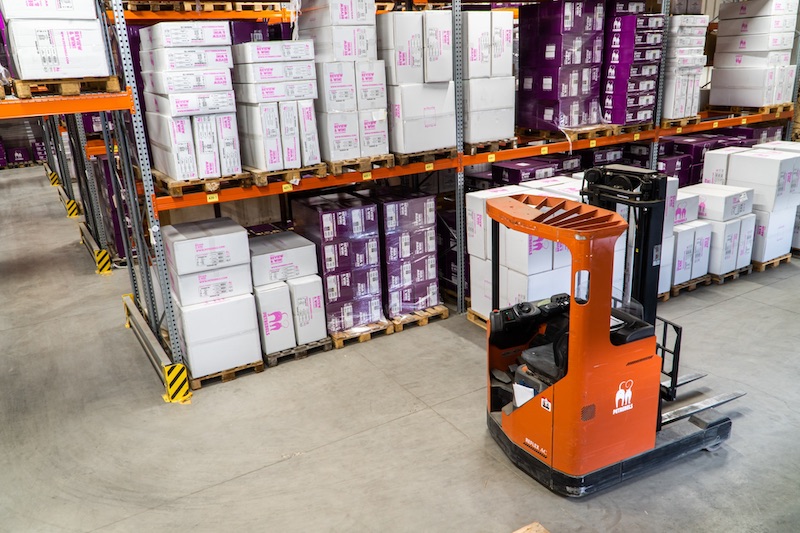
The development of the forklift truck offers an excellent example of how a small innovation seemingly focused on a particular problem – shifting and storing heavy goods within a warehouse – can have an impact that extends well beyond the industry in question. In this case, it drove changes to the physical and architectural landscape of the country and, as a by-product, produced lots of very desirable city-centre apartments converted from ex-warehouse spaces.
Bring in the Robots
It’s highly likely that the introduction of robots into warehouses will eventually have the same unforeseen consequences, both good and not so good - particularly when mechanical robotics unites with the latest innovations in automated process management and wireless communication.
In 2018, Forbes magazine published a survey of 400 senior haulage executives (referenced in this article here from Global Trade). More than two-thirds of the respondents believed that massive changes were needed across the logistic sector if warehouses were to avoid being overwhelmed by the increasing demand for freight. These predictions, of course, took place before the global pandemic, which saw demand for online commerce increase massively – according to Statista, in 2020 more than two billion people purchased goods or services online, and the total worth of global e-retail sales was more than $4.28 trillion. To put this into perspective, in 2014, the figure for global e-retail sales was $1.34 trillion. In warehousing terms, this massive growth in demand meant that warehouses had to cope not only with an increased volume of goods coming in and out but also with additional complicating factors. Such factors include the number of returns inherent in the e-retail sector and the nature of the orders being placed. The average order now being handled by a warehouse is as likely to involve a few disparate items to be delivered to a single consumer as it is a bulk order of components for a business or manufacturer.

Everything Changes
All of this has changed the nature of warehouses. No longer are they primarily storage hubs with a specific fulfilment objective; we now have warehouses whose only reason to exist is as vast fulfilment and distribution centres, and companies like Amazon have turned to robots to meet this challenge.
Amazon got serious about investing in robotics with their 2012 purchase of robotics company Kiva Systems, for $775 million. They instantly took ownership of the latest mobile robots – known as autonomous mobile robots (AMR) - equipped to transport shelves of goods from worker to worker and navigate a warehouse layout via bar codes embedded in the floor. The appeal of this to Amazon is clear – robotics, done properly, enables 24-hour fulfilment and distribution within a warehouse, and is the cornerstone of innovations such as Prime and guaranteed next day - or even same-day - delivery.
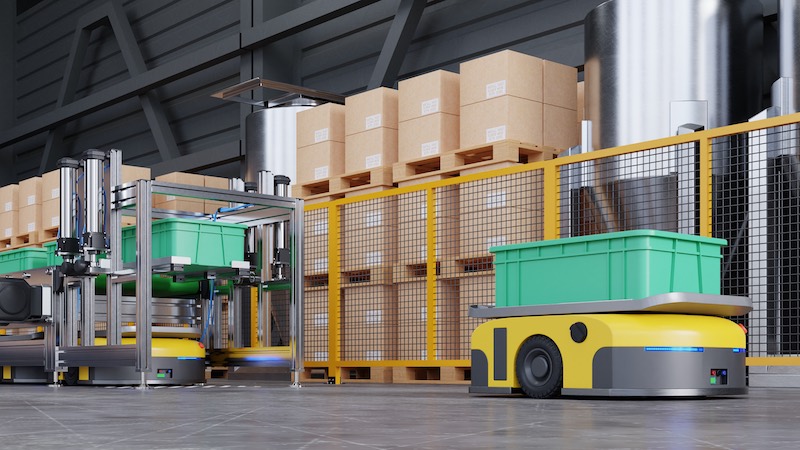
Amazon isn’t the only company to recognise the transformative impact robots are likely to have. In 2018 FedEx followed suit and started using AMRs within its distribution centres, while, in the UK, Ocado unveiled a highly automated fulfilment centre on the outskirts of Andover, in which multiple AMRs moved seamlessly along a grid of metal scaffolding.
Picking - the Final Frontier in AI?
Fast forward to July 2021 and we find Amazon unveiling newer and more advanced robots with names like Bert, Ernie, Scooter and Kermit, capable of moving goods from conveyors onto shelves, carrying products around a warehouse or operating as ‘intelligent’ forklifts. The most advanced robots of this kind use Artificial Intelligence (AI) to navigate themselves around a warehouse, avoiding human workers and other obstacles, rather than simply following a pre-ordained course. Although it has to be said, even these AI-powered robots still lack the advanced motor skills and intelligence needed to perform the most vital task – picking individual items from stock.
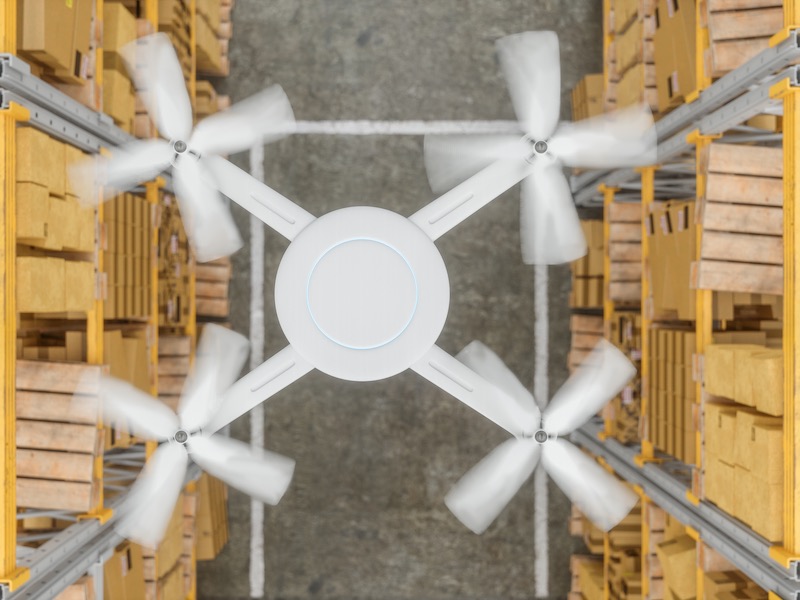
Picking of this kind is the next frontier in warehouse robotics, although there are further advances in other areas of logistics. Drones, for example, are used in some warehouses to scan locations and perform automated inventory checks, albeit while under the control of an operator. These can check high or hard to access spots more simply than employees. At the same time, an automated unit such as the TagSurveyor can make use of Radio Frequency Identification (RFID) to check and track inventory in real time across the floor of a warehouse, vastly reducing the time and labour costs of such activity.
Digital and the Physical Unite for a Powerful Warehouse Operation
All of this only works to maximum efficiency if two other aspects of the modern warehouse are in place. The first of these is a Warehouse Management System (WMS) which controls the operation of the warehouse using digital technology rather than the paper-driven systems that once dominated. In the future, WMS will be controlled via 5G and will incorporate innovations driven by the Industrial Internet of Things to leverage the power of data and increase efficiency even further.
The second aspect required for a modern warehouse – or indeed the warehouse of the future – to function at maximum efficiency is far more fundamental, and it’s the physical configuration of the warehouse. United Storage Systems specialise in this field, and it’s our track record of designing and installing custom layouts for clients with varying demands that means we are perfectly placed to respond to the challenges of the future.
Be Ready!
Racking systems initially designed for conventional forklift trucks and employees may need to be adapted when AMRs become the norm in every size and type of warehouse. Our designs ensure this flexibility with built-in responsiveness from the ground floor. It’s always difficult to predict the future exactly, of course. However, we are confident that the warehouse sector is at the forefront of technological advancements in the supply chain sector. Anyone involved in the industry needs to be ready to meet that challenge and seize the opportunities.
This blog is for information purposes only and should not be construed as legal or financial advice and not intended to be substituted as legal or financial advice.
Find Us
S & L United Storage Systems Ltd
United House, The Street
Takeley, Bishop's Stortford
Hertfordshire, CM22 6QR
Company No. 1313816
VAT No. 291616253Say Hello
01279 871 787Copyright © 2025 S & L United Storage Systems Ltd. All rights reserved.
- About Us

